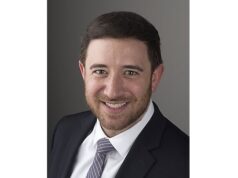
In setting up an interventional radiology (IR) COVID-19 response plan, “the most important initial step is to recognise the problem,” stated John A Kaufman (Oregon Health & Science University, Portland, USA) at this year’s European Conference on Interventional Oncology (ECIO; 10–13 April, online). Based on the experience of one US institution, the presenter conveyed various crucial factors, stressing in particular the importance of supporting providers, the impact on whom will be “long lasting”.
“Our response to COVID-19 has evolved over time,” Kaufman began, noting an initial “very inward-facing approach”, focusing on personal protective equipment (PPE), workflow, personnel, and case selection. Subsequently, he explained, the plan became more “outward facing”, involving the wider institution and focusing in more detail on issues such as testing, staffing, hospital case-loads, and policies. Provider support ran parallel to these two main stages, he added, an element of the plan designed to address factors such as stress, income loss, and family concerns.
The first step was to recognise the issue, said Kaufman, noting that this was complicated by the US political environment. He exemplified the atmosphere at the time: “Mask-wearing was a political statement rather than a healthcare concern”. What followed was the founding of a cross-establishment professional leadership group, including physicians, nurses, technologists, and managers, he detailed.
During the “inward-facing” phase of the IR response, PPE was a top priority due to limited supply as well as uncertainty regarding what to wear and when. Testing was another important issue at this stage. Initially, testing was very limited and took a long time. Decisions surrounding workflow, including which sites to keep operational, how many dedicated COVID-19 rooms were necessary, and room turnover for COVID-19-positive patients, were all addressed during this stage. Finally, the team recognised the need to organise personnel. All office and support workers began to work remotely, and prover schedules were adapted to minimise exposure, the presenter recounted.
“Case selection became very important,” Kaufman continued, detailing that it was important for the institution to observe state and national rulings, such as the ban of all elective cases in Oregon that was initiated in March 2020. During the early months of the pandemic, operating room (OR) volume dropped by 90%, compared to a 30% drop in IR volume, the presenter reported, attributing this to there being “few truly elective cases” in IR. Meanwhile, emergent cases, as well as all cancer treatment, continued.
The presenter detailed a “silver lining” of this early phase of the pandemic as being the increased availability of anaesthesia resulting from OR closures. In the discussion following Kaufman’s presentation, session moderator Otto van Delden (Amsterdam University Medical Center, Amsterdam, The Netherlands) remarked that, in Europe, the number of IR procedures performed fell “considerably”, and to a level far lower than in the USA, due to a lack of anaesthesia support. Van Delden was keen to know what impact a good supply of anaesthesia had on case load, with Kaufman responding that the team certainly noted that, as well as IR cases, they were also treating patients who would have, in normal circumstances, been treated surgically.
In terms of written guidance, Kaufman relayed that the team created a COVID-19 standard operating procedure manual. This was updated as needed, including all aspects of hospital and clinical operations relating to IR, and was shared on a public website. Other elements of this initial stage included holding weekly IR leadership meetings and the conversion of all clinics to either telephone or virtual appointments, with in-person consults reserved for acutely-ill patients.
In the “outward-facing” phase of the team’s COVID-19 response, involving higher levels within the institution, the first “big issues” were PPE, testing guidelines, and isolation rules, Kaufman communicated. In addition, staffing shortages became a major issue, with reassignments and travel restrictions having an ongoing impact. The availability of staff, as well as of intensive care unit (ICU) beds, determined elective admissions and saw a shift of cases to partner hospitals.
Finally, Kaufman stressed the importance of provider support in a successful IR COVID-19 response plan. There are numerous factors that needed to be addressed, he detailed, noting a fear of infecting family members, problems finding childcare and the demands of home-schooling, reduced incomes, isolation, the loss of friends and family members, working longer hours, and treating sicker patients.
“Faculty and families may need to adjust priorities,” Kaufman commented, noting for example the need to change jobs to be closer to family. Other important ways in which the pandemic has affected providers included reduced caseload for learners, decreased academic productivity—which he noted has disproportionately affected women—and the proliferation of virtual meetings and conferences. “Keep in mind the impact on providers will be long lasting,” he concluded.











